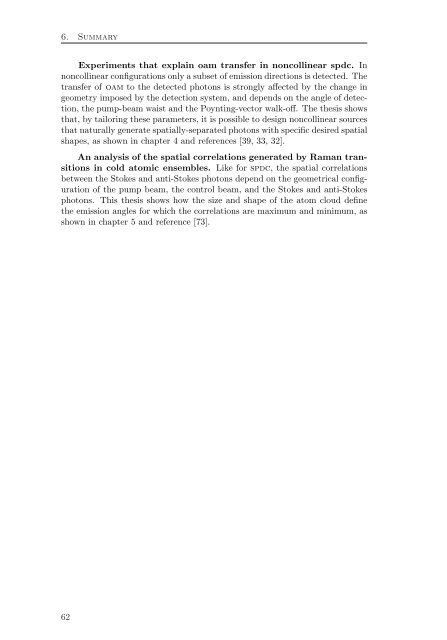Spatial Characterization Of Two-Photon States - GAP-Optique
Spatial Characterization Of Two-Photon States - GAP-Optique
Spatial Characterization Of Two-Photon States - GAP-Optique
You also want an ePaper? Increase the reach of your titles
YUMPU automatically turns print PDFs into web optimized ePapers that Google loves.
6. Summary<br />
Experiments that explain oam transfer in noncollinear spdc. In<br />
noncollinear configurations only a subset of emission directions is detected. The<br />
transfer of oam to the detected photons is strongly affected by the change in<br />
geometry imposed by the detection system, and depends on the angle of detection,<br />
the pump-beam waist and the Poynting-vector walk-off. The thesis shows<br />
that, by tailoring these parameters, it is possible to design noncollinear sources<br />
that naturally generate spatially-separated photons with specific desired spatial<br />
shapes, as shown in chapter 4 and references [39, 33, 32].<br />
An analysis of the spatial correlations generated by Raman transitions<br />
in cold atomic ensembles. Like for spdc, the spatial correlations<br />
between the Stokes and anti-Stokes photons depend on the geometrical configuration<br />
of the pump beam, the control beam, and the Stokes and anti-Stokes<br />
photons. This thesis shows how the size and shape of the atom cloud define<br />
the emission angles for which the correlations are maximum and minimum, as<br />
shown in chapter 5 and reference [73].<br />
62



